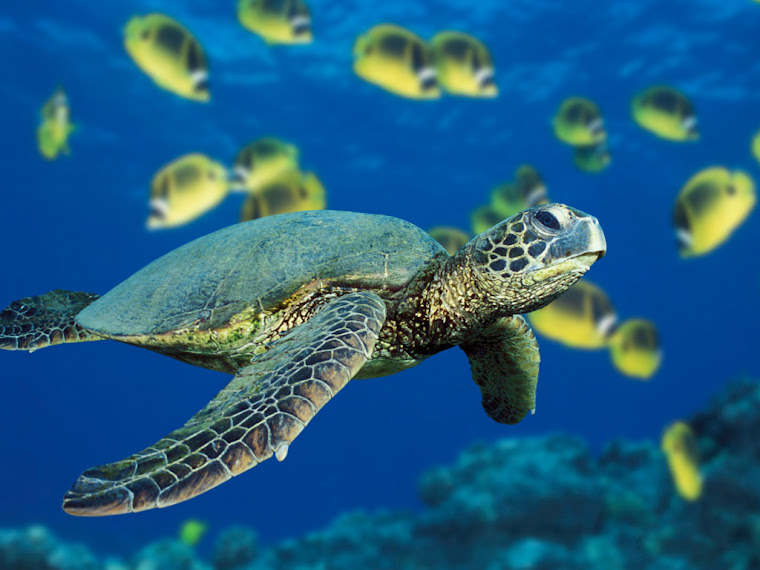Dolphins:..
--> Dolphins are found worldwide, mostly in the shallower seas of the continental shelves, and are carnivores, mostly eating fish and squid. They have a streamlined fusiform body, adapted for fast swimming. The basic colouration patterns are shades of grey with a light underside and a distinct dark cape on the back. It is often combined with lines and patches of different hue and contrast. The head contains the melon, a round organ used for echolocation. In many species, the jaws are elongated, forming a distinct beak; for some species like the Bottlenose, there is a curved mouth which looks like a fixed smile. Teeth can be very numerous (up to two hundred and fifty) in several species. The dolphin brain is large and has a highly structured cortex, which often is referred to in discussions about their advanced intelligence. Unlike most mammals, dolphins do not have hair, but they are born with a few hairs around the tip of their rostrum which they lose after some time, in some cases even before they are born. The only exception to this is the Boto river dolphin, which does have some small hairs on the rostrum. Their reproductive organs are located on the underside of the body. Males have two slits, one concealing the penis and one further behind for the anus. The female has one genital slit, housing the vagina and the anus. A mammary slit is positioned on either side of the female's genital slit.
http://en.wikipedia.org/wiki/Dolphin
***Compared to:
~Describe at least 4 adaptations for each animal and contrast these adaptations to animals of the same class on land. How is the physiology different between the animal and another from the same class on land?
Subscribe to:
Post Comments (Atom)


No comments:
Post a Comment